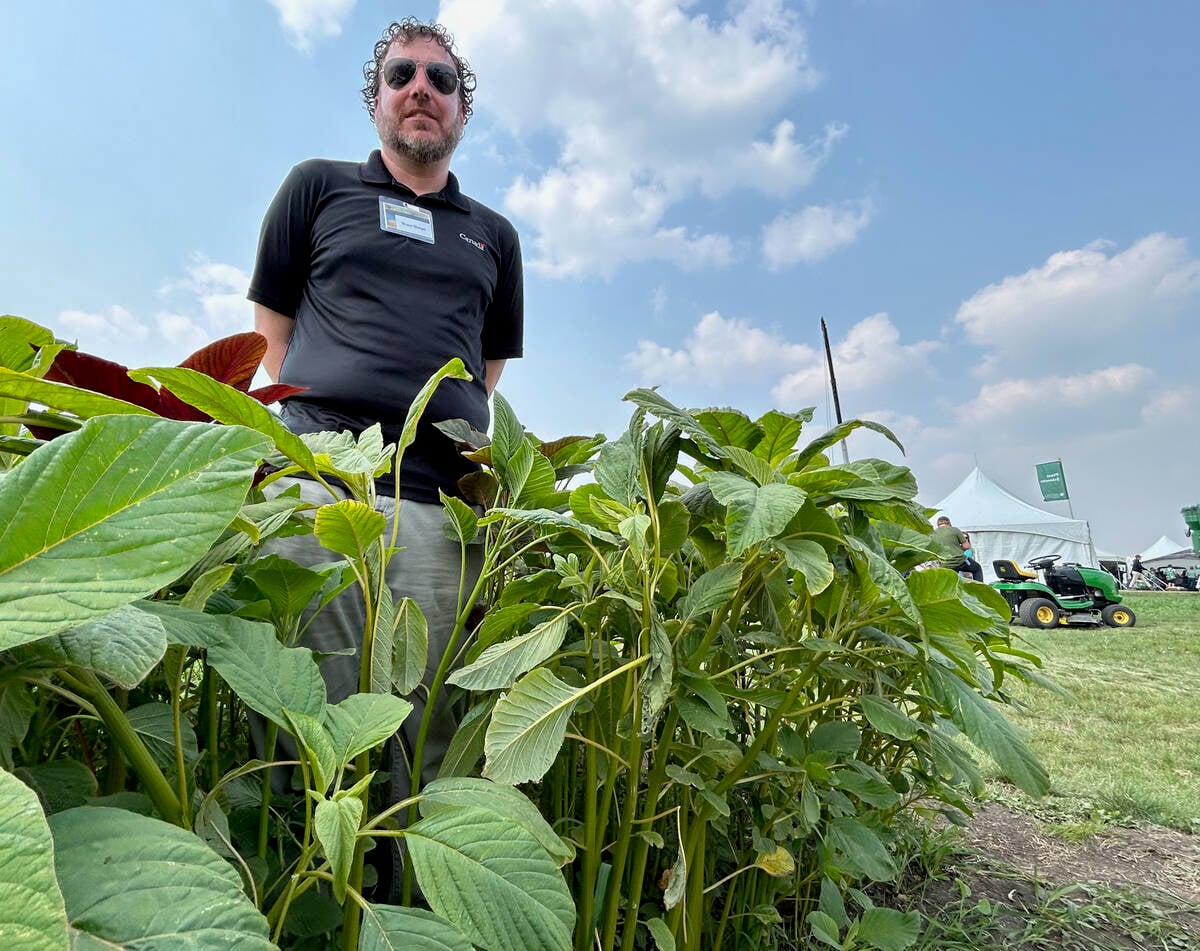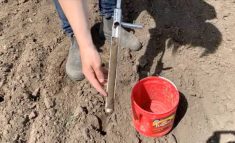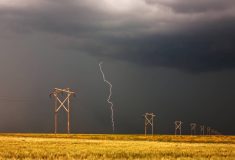In the last issue of Grainews (see ‘Nitrogen fertilizer management to reduce nitrous oxide emissions, Part 1’), I discussed the government of Canada’s target to reduce levels of greenhouse gas (GHG) emissions from fertilizer application 30 per cent below 2020 levels by 2030. As stated in that feature, it is my opinion many western Canadian farmers are using good nitrogen management practices. With continued improvement, I suspect nitrogen fertilizer could be applied at rates for optimum crop production and still meet the 2030 nitrous oxide emissions reduction target.
To achieves this, Prairie farmers must examine how they can further adopt 4R fertilizer management practices applicable to their local soil, landscape and climatic conditions. This means farmers should review various 4R (the right time, the right rate, right product and right placement of fertilizer) management practices to determine what would best fit their farming systems and agro-ecological areas they farm.
Let’s review some of the key 4R practices that could be considered.
Read Also

Glufosinate-resistant waterhemp appears in U.S. Midwest
News of glufosinate-resistant kochia in the U.S. is concerning as farmers are losing options to control waterhemp, also of the pigweed family.
Band placement of nitrogen at seeding
[RELATED] Manitoba Co-operator: 4Rs reduce greenhouse gas emissions
Jeremy Boychyn, an agronomy research and extension specialist with the Alberta Wheat Commission, summarized the results of the 2021 Fertilizer Canada survey of western Canadian wheat growers and reported that 74 per cent of Prairie wheat growers side or mid-row banded nitrogen at the time of seeding in 2021. This is excellent news.
Our Alberta nitrogen fertilizer research clearly showed nitrous oxide emissions were lowest when nitrogen is side or mid-row banded at seeding. This suggests most Prairie wheat growers are using the best placement and time of nitrogen fertilizer application. As more farmers adopt banding nitrogen at planting, nitrous oxide emissions can be further reduced.
Soil testing use
Soil testing has been widely promoted over the years, but it is estimated less than 20 per cent of Prairie farmers regularly soil test. This is a huge, missed opportunity. By assessing nutrient levels each year, only the nutrients that are deficient or marginal need to be added.
Soil testing for nitrate-nitrogen is very important to fine-tune nitrogen fertilizer rates, which in turn can help to minimize nitrous oxide emissions. In the early 1980s, a slogan and bumper sticker we used was “Don’t Guess — Soil Test.” This philosophy is even more important today with the high cost of nitrogen fertilizer and increased concerns about greenhouse gas emissions.
Fine-tune nitrogen application rates
In 2021, about 63 per cent of wheat growers in Western Canada used the same fertilizer blend for each of their spring wheat fields, according to Boychyn’s survey summary. This indicates a real opportunity for farmers for more soil testing and to fine-tune their specific rates of nitrogen fertilizer for each field, instead of using only one rate for all of their wheat fields. Farmers must pay attention to nitrate-nitrogen soil test results for each field to fine-tune the optimum nitrogen fertilizer rate.
The best way to estimate optimum nitrogen fertilizer rates is by using regional nitrogen fertilizer response curves for the agro-ecological area you farm. Nitrogen fertilizer response curves are developed from nitrogen fertilizer rate trials on typical soils in your region over a period of years with the newest crop varieties.
Up-to-date nitrogen response curves consider soil test nitrate-N, soil mineralization, nitrogen fertilizer efficiency, stored soil moisture and growing season precipitation. The benefit of this information is by using the cost of nitrogen fertilizer and the estimated value of your crop, the optimum economic rate of nitrogen fertilizer can be determined.
Sadly, maintaining and updating nitrogen response curves for various crops across all soil regions of the Prairies simply isn’t done anymore. Alberta farmers do have access to Alberta Agriculture’s fertilizer recommendation program called Alberta Farm Fertilizer Information Recommendation Manager (AFFIRM). This program can be accessed online and downloaded free of charge from the Alberta Agriculture website.
The program was developed with all available nitrogen fertilizer response curves for the various agro-ecological areas of Alberta, prior to the funding cuts for research personnel and general staff. With the high cost of nitrogen fertilizer, these response curves allow a farmer to optimize the right nitrogen rate for each field and crop. For more detailed information on how to fine-tune nitrogen rates, see my previous column called ‘How to develop nitrogen fertilizer recommendations‘.
Use field-specific fertilizer blends
According to Boychyn’s survey summary (available on the Alberta Wheat & Barley website), only 22 per cent of wheat growers in 2021 used a specific fertilizer blend for specific fields. This suggests less than a quarter of farmers fine-tune nitrogen rates and other fertilizers for each field. This is an excellent opportunity for Prairie farmers to soil test and match nitrogen fertilizer rates specific to each field and each crop. This could go a long way to further decrease nitrous oxide emissions.
Use of enhanced efficiency fertilizers
Just over six per cent of the total nitrogen volume applied in Western Canada was either ESN (Environmental Smart Nitrogen) or Super-U by wheat growers in 2021. In wetter regions of the Prairies with a higher potential of wet soil conditions and denitrification potential, use of an enhanced efficiency nitrogen fertilizer should be considered, particularly going into a wetter-than-normal spring.
In drier Prairie regions, or during drier springs, there is less benefit to using enhanced efficiency fertilizers such as ESN or Super-U.
[RELATED] Alberta Farmer Express: Cutting fertilizer emissions can be profitable if done sensibly
In lower-relief areas of fields that tend to be wetter and have an increased risk of denitrification, farmers should consider managing these areas separately by using an enhanced efficiency fertilizer. The bottom line is farmers with field areas subject to increased denitrification or farms in agro-climatic areas with increased denitrification risk should discuss the potential benefits of using an enhanced efficiency nitrogen fertilizer with their agronomists and fertilizer dealers.
Use of variable-rate fertilization
According to Boychyn’s summary, only 14.7 per cent of growers used variable-rate fertilizer (VRF) on some or all wheat fields in Western Canada. This means about 85 per cent of fields in Western Canada received a single rate of fertilizer. There are varying opinions on what percentage of land would benefit from VRF technology. However, farmers with fields with variable soils and landscapes should explore the potential opportunities of VRF on a few of their most variable fields.
In-crop fertilizer application
Only 1.2 per cent of wheat acres received an in-crop nitrogen application, according to Boychyn’s summary. This very low percentage may partly be due to drier-than-normal moisture conditions across the Prairies in 2021.
In the drier regions, in-crop nitrogen is often less efficient, as rain is needed to move the in-crop-applied nitrogen fertilizer into the soil. However, in wetter regions of the Prairies, when moisture conditions are good, an in-crop nitrogen application can be a reasonable consideration. For irrigation farmers growing longer-season crops on coarse-textured soil, fertigation of nitrogen can potentially be a good choice and is worth discussing with their agronomists and fertilizer dealers.
Take-home messages
Almost 75 per cent of Prairie wheat growers side or mid-row band nitrogen at seeding. Putting nitrogen at the right place and right time is an excellent 4R decision. It would be great to see this trend continue to increase.
Only a small percentage of farmers soil test. This is a missed opportunity. Armed with soil test results, many other 4R nitrogen management practices can be explored including fine tuning nitrogen application rates, using field-specific fertilizer blends and possible use of enhanced efficiency fertilizers.
Farmers should discuss the various 4R opportunities with their agronomists and fertilizer dealers. I always suggest seeking several opinions to make informed fertilizer decisions.
Variable-rate fertilization also offers opportunities, and I will discuss these in more detail in a future Grainews article.
Finally, adoption of 4R practices that are appropriate for your crops, soils, landscapes and agro-ecological areas of your farm can improve nitrogen fertilizer use efficiency, increase crop yields and reduce nitrous oxide emissions — a clear win-win-win for everyone.
















